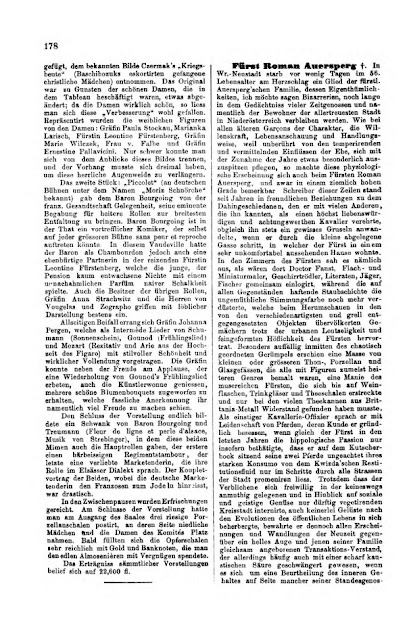You know what it's like when you are sure, quite quite sure, that you have done something ...
Fifteen or more years ago, I wrote the article that follows as part of my Victorian Vocalists project. I was convinced it had made the cut into the top hundred and been published in the book, but no. Then I must have posted it one my blog? No. What the ... it was just sitting in my computer's brain, vegetating. Well, today, while searching for something else completely, I came across an excellent piece by one Audrey Carpenter, about Madame Joanna Sestini Stocquler ... great! A pre-quel to my story! Who was Ms Carpenter. 'Audrey T Carpenter graduated in English from Loughborough University in 1990. Since she found out that the opera singer Giovanna Sestini was a direct ancestor of hers, she has been researching her life and times'. Alas, I can't reach her. The Society for Theatre Research (tiens! does it still exist? They ignore me) and Gale seem to have published her work, internetted it, forbidden its reproduction, so I will just post the link to her article: https://www.thefreelibrary.com/A+%22most+enchanting+comic+actress%22%3A+Giovanna+Sestini%2C+an+Italian+opera...-a0466616837
So if you paste her article onto mine ... hey, Audrey, there's a BOOK in this family. Oh, I see, you've published your part of the story already ...
Do tell me if you are descended from Fanny-chita!
FANCHITA, Mademoiselle [STOCQUELER, Fanny] (b Arundel St, London 1847; d unknown)
What do Miss Stocqueler, Broadway pantomime and burlesque girl; Miss Hayward of the Union Square Theatre and Boston Museum stock companies; Mlle Fanchita, star of opéra-bouffe at the London Alhambra; and Madame Francesca Barri, prima donna of the Royal Opera House, Madrid, have in common? Yes, they are all – give or take the passing of time -- the same person.
Fanny Stocqueler came from a highly colourful family. Her father was Joachim (or Joaquin) Hayward Stocqueler (b Abchurch St, London 21 July 1801; d Washington, DC 14 March 1886), a personality – what would doubtless, nowadays, be called a ‘celebrity’ -- in the worlds of journalism, literature, theatre, and business, with a special slant towards things Indian and things of the armed forces. J H Stocqueler has been greatly written about (and the stories, of course, vary wildly), and has even made his way to the British Dictionary of National Biography, but attitudes to him seem to differ dramatically. In India, where he was undoubtedly influential as an editor and a journalist with English-language newspapers in the 1830s, he is spoken of with respect and admiration, and his books on the Orient and on matters of the army are quoted widely as being reference works of importance; but his career in Britain, whence he returned in 1843, is a very strange mixture of events and shades. He became a diorama lecturer, at Regent Street’s Gallery of Illustration (Illustrations of India, The Campaigns of Wellington, Diorama of the Overland Route) and at Willis’s Rooms, and he penned a little musical farce Polkamania for the English Opera House, and a vast spectacular on The Battle of Alma for Astley’s Theatre, as well as a continuing stream of books and articles on eastern, army and biographical subjects (Life and Scenes in British India etc). But he also ran an ‘army agency’ which seems to have been effectively a front for commission jobbing, and this led to his being accused of forgery and, in 1860, even mixed up in a murder. He promptly headed for America, to get his tuppenceworth out of the American Civil War, and established himself, once again, as a voluble personality. In 1873, he authored an autobiography, The Memoirs of a Journalist, and, in later life, he took to calling himself ‘Siddons’, having decided, rather tardily, that he was the illegitimate grandson of the famous actress, Sarah Siddons.
In fact, if he is to believed, he actually had another well-known theatrical forebear. His grandfather, Jose C[h]ristiano Stocqueler (d 7 April 1812), a Portuguese, apparently of German origins, is said to have eloped from Lisbon, in 1774, with the opera singer known as ‘Madame Sestini’. The pair settled in London where Jose became ‘many years one of the agents of the Royal Wine Company of Oporto’ and the lady, a well-liked soubrette soprano, appeared, for a good number of seasons, at the various opera houses. She is interred, alongside her husband (‘Knight of the Order of Christ in Portugal’), at the cemetery of St Pancras: ‘Mrs Joanna Stocqueler, died 14 July 1814, aged 66 years.’ Joanna?
Jose’s (and Joanna’s?) son, Joachim Christian (d July 1813), more prosaically, an insurance agent of Abchurch Lane, married Elizabeth, daughter of the fashionable doctor Francis Hayward (‘of Warrington’ later ‘of Bath’) (2 October 1800), and, of them, was born the multicoloured John Hayward Stocqueler. The book Bygone Days in India recounts his early life, of which, suffice it to say, he wed in India (Jane Spencer, 4 February 1828 Bombay), produced a son Edwin Roper (b 7 November 1829), who went on to make the Australian reference books as a goldfields artist, but separated from them, returned to England and, instead, in 1844, married (bigamously?) Mrs Eliza Wilson Pepper. Amongst the surviving children of that marriage was – yes, we have got to her at last – Fanny, born 1847.
I spot the family in the 1851 census at Pelham Cottage, Pelham Terrace, Kensington: Joachim 49, editor of a newspaper and public lecturer, Eliza aged 26, daughter, Fanny 4 and son, Edgar [Hayward Stocqueler] 2.
Miss Fanny Stocqueler went on the stage for the first time during the family’s time in America. I see her in 1866 (18 June) at the Olympic Theatre playing Poo-tee-pet in Po-ca-hon-tas alongside Brougham and Emilie Melville, and the following year playing five different characters (with a song by one Signor Tamaro) in the spectacular The Devil’s Auction at Banvard’s Museum. In 1868 I see it reported that ‘Miss Fanny Stocqueler is a favourite in Montreal’ in the ‘operatic role of Idex [in Undine]’, and that ‘Miss Lizzie Cooper and Miss Fanny Stocqueler, two excellent actresses’ are playing the Norombega Hall, Bangor, Maine in The Lady of Lyons and The Englishman in India.
And then, suddenly, Miss Stocqueler metamorphoses in to ‘Miss Fanny Hayward’. Why? Was she trying to upmarket? In 1872-3 she is at the Union Square Theatre, playing in Sardou’s Agnes, The Two Roses, Orange Blossoms et al, but when she moves to Augustin Daly’s company at the Grand Opera House, she plays not only Titania in A Midsummer Night’s Dream, but also principal boy in the G H Fox pantomime Humpty Dumpty Abroad. I spot her in February 1873 playing Leoda in Clari and Christine in Love in Humble Life at Brooklyn. In 1874, she was a member of the stock company at the Boston Museum, and then it was time for another change. ‘Miss Fanny Hayward’ was retired, and on 13 September 1875 ‘Mlle Fanchita’ made ‘her first appearance in England’ at London’s Globe Theatre, playing the role of Fiorella in Francis Fairlie’s production of what pretended to be Offenbach’s Les Brigands, alongside Camille Dubois and J A Shaw. And, in the role of the brigand chief himself, was a singing-songwriting Irishman by name of Slater, who also fancied himself under a funny name, and insisted he was ‘Signor Odoardo Barri’ ('he appears not to be in his element delineating a character'). La Fanchita did better: 'Her singing is really good, her voice of excellent quality, and her acting has all the dash and spirit wanted in opéra-bouffe' (Era).
Mlle Fanchita went from the Globe to the Queen’s Theatre, to take part in what was to be a spectacular version of the favourite pantomime The White Cat: unfortunately, the only thing spectacular about it was the scope of its disaster. But then things looked up. During the run, Mlle Fanchita (who signed the register ‘Fanny Hayward’) and Signor Barri (who allowed ‘Edward Barri’) were married. And then, in February 1876, the lady was taken on at the Alhambra to play, opposite original star Rose Bell, the role of Haydée, created by Kate Santley, in the operatic extravaganza Don Juan. ‘[Mlle Fanchita], in a pretty song called ‘Waiting’, fair took the audience by storm … she plays with remarkable vivacity’.
However, the Alhambra engagement was a one off, and in the following years ‘Madame Fanchita Barri’ was seen but episodically in concert – the Royal Aquarium, the Glasgow Saturdays, the Brighton Aquarium, Willis’s Rooms (25 June 1876, their own concert), Rivière’s Proms, in a concert party (billed as ‘of the New York Academy’) with the tenor Urio and Miss Jessie Bond, depping for Alwina Valleria at Georg Jacobi’s concert (‘une jolie voix de mezzo-soprane’ in The Jewel Song and ‘O luce di’), at the concerts of Augustus Tamplin and Carl Bohrer, the Yarmouth Aquarium or the Marble Club proms, the Scarborough Aquarium – as well as in pantomime. Her performance in Sinbad at the Manchester Prince’s ('a graceful and pleasing actress, and sings with great taste') gave a new meaning to the word 'knockout'. A masked chorister, carrying a ladder, whacked the star on the head and she had to be carried off.
In July 1879 she returned to the London stage. Mrs Wentworth Sturgeon (‘May Bulmer’) went into management to star herself in a version of Bazin’s A Cruise to China at the Garrick Theatre, and amongst her cast was billed … Miss Fannie Hayward! Briefly.
But there was yet more to come. After a period of semi-invisibility (some of it seemingly spent at the Teatro Reale, Madrid, and at Burgos), in January 1881, a large advertisement appeared in the British music press. Madame Francesca Barri, it claimed, had been singing Filina to the Mignon of Christine Nilsson and Siebel to the star’s Marguerite and the Faust of Gayarre. She had sung Leonora and Marguerite with Tamberlik, and was currently appearing at the Teatro Italiano, Coruna, Spain. Britain would soon have a chance to judge this latest transformation for itself, for, in October 1881, Samuel Hayes ventured a season of opera at the Lyceum and ‘Madame Francesca Barri from the Grand Opera, Madrid’ was billed. By 9 October, when she made her debut, it was already clear that Mr Hayes’s casts were distinctly lacking in depth. And Mme Barri was at the bottom end. She appeared in Il Trovatore with Frapolli, d’Antoni and Mlle Le Brun and The Times commented 'from indisposition or nervousness [she] seemed unable to control the remnants of what at one time may have been a sonorous soprano'. The season collapsed, and the Slater-Barris sued Mr Hayes for compensation.
On 5 July I spot Fanny on the programme of Messrs Lansmere and Betjemann’s concert at Neumayer Hall. ‘Madame Francesca Barri was greatly applauded in the Jewel Song from Faust which she gave with no little power and fluency. Indeed, it would have been as well if the lady had restrained herself more, as the effect of the Jewel Song depends more on fluent vocalisation and taste than upon vocal powers.’ Restraint doesn’t seem to have been one of Mme Barri’s notable qualities. On 18 July 1882 on the occasion of a concert given by the pianist Mons de Nevers, the two Barris sang, along with Mlle Desvigne. And then I lose Madame Barri. I don’t lose him, just her.
Unless she is (and she surely must be) the Francesca Barri singing in II Guarany at the Teatro Manzoni, Pistoia in 1883-4 … ? and at the Teatro Ristori, Verona as Maria d'Alvarez (mezzo-soprano) in Ferrucio Ferrari’s Fernanda alongside tenor Papeschi, baritone de Bernis and prima donna Elise Bassi. 'Infelice .... senza colorire, senza accentuare, e con una disinvoltura molto discutibile'. And, heavens, there’s more! There she is at Carnevale at Ragusa singing Leonora in Il Trovatore and this time she is liked:‘valente artista che riunisce le piu belle qualità: eleganza, voce, studio e senso drammatico’. Wow! In January 1886 its Amelia in Un ballo in maschera then in July, Piacenza as ... Norma!. May Tifft from King's, New York gave her Lucia. But Fanny (13 years older than Miss Tifft) broke her contract ('un vero peccato') and left Piacenza ... and that’s my last sighting of either of them.
‘Odoardo’ would have a long existence in the musical world as a singing teacher and songwriter, finally finding a sort of fame when – years after its first appearance – his song ‘Boys of the Old Brigade’ caught on and became a popular success.
He also re-married, in 1900, the thirty-years-younger Mary Kate Stainer, vocally known as 'Madame Maud Santley' (b Ryde 4 January 1873; d Ryde 7 July 1952), so I imagine that means that Fanny was, in one way or another, gone. But of that going, I have found no trace.
I have followed Miss/Mrs Fanny Stocqueler-Slater though each of her series of metamorphoses, but on the last one she has beaten me.
The name of Stocqueler is an infrequent one, and I suspect that the small band of such-named folk who inhabited the London of the turn of the 18th century were all related in some way to the original Jose and his Joanna.
So, it is interesting to note the Miss or Mrs Stocqueler singing in the Italian opera chorus in 1834. Also, the Mrs Elizabeth Stocqueler (née Thomas), widow of Peter of that name, who re-married the cough-mixture man Stewart Cundell, in 1817, and became the mother of not one but two international prime donne of real value: Helen Cundell-Greiffenhagen and Elizabeth Danterny.
One last family note. The Hayward family threw up one more celebrity, but not in the theatre – although he has been portrayed therein. Elizabeth Hayward’s brother, Thomas, was the midshipman on the HMS Bounty, on that much-publicised voyage during which Mr Christian led the mutiny against Captain Bligh.
























































